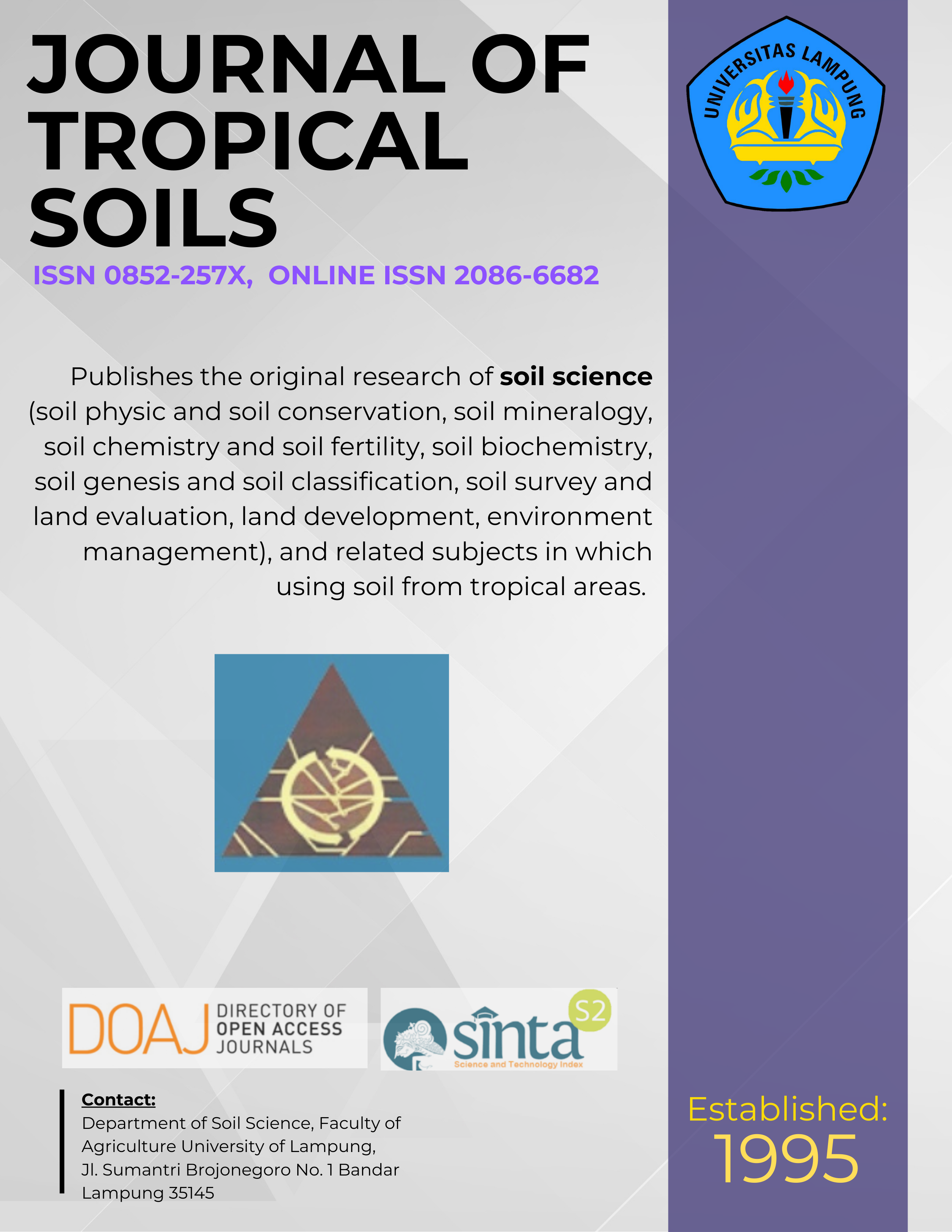Soil Quality Improvement Using Compost and its Effects on Organic-Corn Production
Main Article Content
Abstract
Intensive agriculture has been well known to cause decline in soil organic matter and nutrient content of the soils. Therefore, efforts should be taken to avoid this from happening. Addition of organic fertilizers like compost has been increasingly become more important in Indonesian agriculture in the last couple of decades. The objectives of this study were to produce high quality compost using Indore method and to investigate its effects on organic-corn production. The study was conducted in the Integrated Agriculture Zone (IAZ), University of Bengkulu for two years (2012 and 2013). The study consisted of three steps: (i) soil fertility identification, (ii) compost production, and (iii) organic-corn field production. Soil fertility identification involved physical, chemical, biological analysis of soil samples collected from less fertile and moderately fertile soils. A randomized completely block design was employed in the field study which involved five rates of compost and two levels of soil fertility with three replications. In 2012, high quality compost was black, had pH 8, fine, odorless, and sufficiently high in NPK contents. Organic-corn yielded 2.94 and 5.69 Mg ha-1 of dried kernels on less fertile and moderately fertile soils, respectively at 20 Mg ha-1 compost. Similarly, in 2013 high quality compost was black, had pH 8, moderate, odorless, and high in NPK contents. The corn yields were 3.75 and 1.93 Mg ha-1 on less fertile and moderately fertile soils, respectively at 22.50 Mg ha-1 compost.
[How to Cite: Riwandi, M Handajaningsih, Hasanudin, and A Munawar. 2015. Soil Quality Improvement Using Compost and its Effects on Organic-Corn Production. J Trop Soils 19: 11-19. Doi: 10.5400/jts.2015.20.1.11]
[Permalink/DOI: www.dx.doi.org/10.5400/jts.2015.20.1.11]
Downloads
Article Details
Section
License for Authors
Authors who publish with this journal agree to the following terms:
- Authors retain copyright and grant the journal right of first publication with the work simultaneously licensed under a Creative Commons Attribution License that allows others to share the work with an acknowledgement of the work's authorship and initial publication in this journal.
- Authors are able to enter into separate, additional contractual arrangements for the non-exclusive distribution of the journal's published version of the work (e.g., post it to an institutional repository or publish it in a book), with an acknowledgement of its initial publication in this journal.
- Authors are permitted and encouraged to post their work online (e.g., in institutional repositories or on their website) prior to and during the submission process, as it can lead to productive exchanges, as well as earlier and greater citation of published work (See The Effect of Open Access).
License for Regular Users
Other regular users who want to cite, distribute, remix, tweak, and build upon author’s works, even for commercial purposes, should acknowledge the work’s authorship and initial publication in this journal, licensed under a Creative Commons Attribution License.

